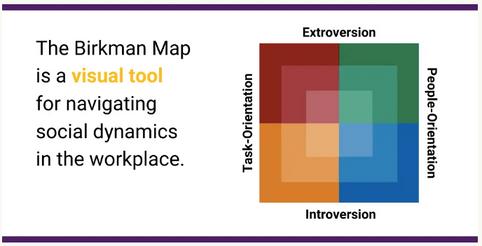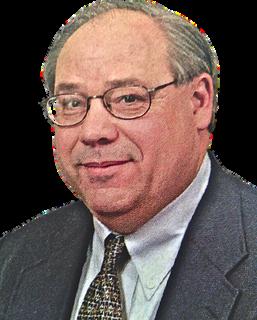
6 minute read
It's Not Just WHAT You Think, But HOW!
By Steve Clabaugh, CLU, ChFC
Almost every morning, for the 50 years we’ve been married, Gretchen and I have started the day with what we like to call our “Morning Mugs.” In the quiet of the early morning hour, we enjoy our coffee and conversation about everything under the sun. It’s my favorite time of day even though our approach to the time is very different.
Here’s an example from an actual recent morning together:
Gretchen’s thoughts and comments between 6:00 –7:30am (abbreviated version)
“Don’t forget, I have quartet practice at 10:30 this morning; I got tickets to go to the Christmas Show at the Carolina Opry with the kids at Thanksgiving rather than New Year’s Eve; On the Wednesday of our trip to Montana next July we have a choice between a hike or a cruise on the lake – I’m thinking the cruise will be more relaxing after 3 days of hiking; we’re meeting the kids at church this Sunday rather than picking them up at their house; we’re meeting the Musselwhites for lunch at 11:30 this morning; instead of the Christmas show on New Year’s Eve, I found a Strauss concert that afternoon we can attend; we need to spend some time with Nancy this week – she's really missing Harry and can use the fellowship and encouragement; I saw Beth yesterday afternoon and she is feeling much better now “
Steve’s thoughts and comments between 6:00 –7:30am (full version).
“Get the coffee started; try to follow Gretchen’s thoughts; work on article for Voluntary Advantage this morning; volunteer at stables this afternoon; maybe I can fit in a little fishing before going to the stables”.
At first glance, you might determine that the difference in our thought process is because Gretchen is clearly much smarter than I am – and you would be correct that she is. But the real difference is not in what we are thinking but in how each of our brains work.
In 1951, Dr. Roger W. Birkman created The Birkman Method to measure personality characteristics that influence behaviors, motivations, and perceptions.
Among the issues he studied was the phenomenon of why some people can hold multiple random thoughts and ideas in their brain at the same time; process them without confusion; arrive at practical decisions and implement those decisions in a positive manner. Other people identify and process thoughts and ideas on a straight line from point to point until arriving at a conclusion and logical implementation.
Dr. Birkman gave definition to these differences (and others) describing them this way:
Conceptual-Global: “Individuals with high scores on Conceptual and Global are strategic thinkers and are often comfortable with ambiguity. They can be quite patient when reflecting on all the possibilities – even those that have little chance of actually coming to fruition. Open to new ideas, they prefer to consider all facets of a problem or issue before taking action. Their problem-solving approach would often be considered more intuitive than fact-based. They consider it their priority to make sure that the problem has been thoroughly identified and defined Then they take action on solving the problem”. (thewineingercompanycom)
Concrete-Linear: “Individuals scoring highly on both Concrete and Linear are practical and action-oriented. Their credo is “Give us the facts and get out of our way.” These individuals see the use of logic and hard analysis as valuable and necessary. On the other hand, they are impatient with the planning process and often question its value. They are at their best when the problem to be fixed can be readily analyzed and contains an element of urgency. Objective and pragmatic, these individuals are not drawn to problems just because they are problems. The problems need to have practical results if solved”.(thewineingercompanycom)

Many years ago, Gretchen and I learned about Dr Birkman’s research, and we discovered his definition of our different approaches to thinking Gretchen’s mind processes thoughts on a Conceptual-Global basis while mine is Concrete-Linear. This difference can be very frustrating and uncomfortable in a marriage. Looking back, we saw that most of the conflicts we have experienced were based our different thinking processes. Understanding the differences has had a great and positive impact on our relationship.
The differences in how we process, and plan can cause major conflicts in business as well. Have you ever experienced confusion and frustration as part of a committee or team involved in planning and implementing an important project? Chances are much of the confusion was caused by the conflict of Conceptual-Global vs Concrete-Linear thinking.
The great news is that once you understand the differences and prepare for them, you can accomplish some truly great things. Over the years, I have seen the positive results of respecting and encouraging both types of thinking on such critical areas as: developing effective sales strategies; budget planning and coordination; high level corporate meetings; board presentations; incentive trips; departmental organization; developing job descriptions for new positions; creating organizational structures and more.
As you begin to think about this, here’s an important tip that has really helped me. Conceptual-Global thinkers can adapt their thought processes to that of Concrete-Linear thinkers. Unfortunately, it doesn’t work well in reverse.
Both at home and in the community when I feel a little lost during planning projects, I have learned to point out to my Conceptual-Global friends that “you just went on a trip without taking me with you”. It’s a friendly non-threatening way to help them re-set the discussion to fit into my Concrete-Linear brain processes.
To learn more about how to understand and prepare for differences in thinking styles, I highly recommend considering the materials and programs from The Birkman Method (birkman.com) or The Wineinger Company (thewineingercompanycom).
As always, please feel free to contact me if you’d like to discuss this or any other aspect of Relational Leadership at sjcsr@hotmailcom.

Steve Clabaugh, CLU, ChFC - started his career in insurance as a Field Agent, moving on to Sales Manager, General Manager, Regional Manager, Vice President, Senior Vice President, and President/CEO. A long time student of professional leadership, Steve created the Relational Leadership program that has been used to train home office, field sales associates, mid-level managers, and senior vice presidents.








